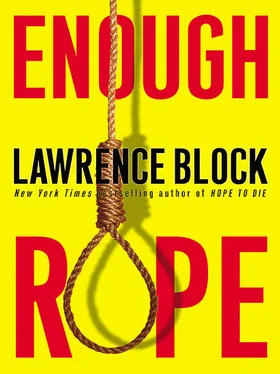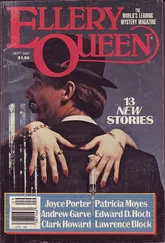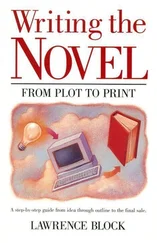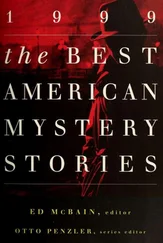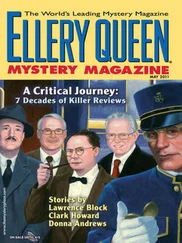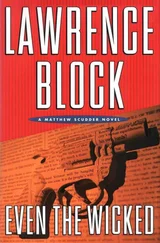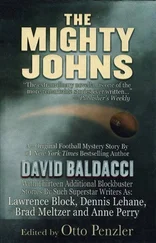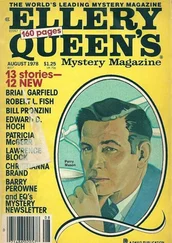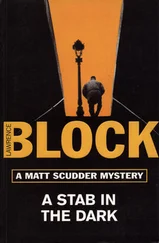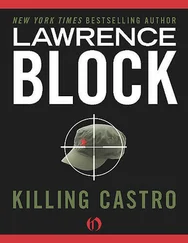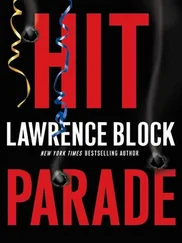After the last of the panelists had been introduced, a thin, weedy man in a dark suit passed quickly among the group with a beverage tray, then scurried off the stage. Mavis Mallory took a sip of her drink, something colorless in a stemmed glass, and leaned toward the microphone. “What Happens Next?” she intoned. “That’s the title of our little discussion tonight, and it’s a suitable title for a discussion on this occasion. A credo of Mallory’s Mystery Magazine has always been that our sort of fiction is only effective insofar as the reader cares deeply what happens next, what takes place on the page he or she has yet to read. Tonight, though, we are here to discuss what happens next in mystery and suspense fiction. What trends have reached their peaks, and what trends are swelling just beyond the horizon.”
She cleared her throat, took another sip of her drink. “Has the tough private eye passed his prime? Is the lineal descendant of Sam Spade and Philip Marlowe just a tedious outmoded macho sap?” She paused to smile pleasantly at Bart Halloran, who glowered back at her. “Conversely, has the American reader lost interest forever in the mannered English mystery? Are we ready to bid adieu to the body in the library, or—” she paused for an amiable nod at the slightly cockeyed Miss Trill “—the corpse in the formal gardens?
“Is the mystery, if you’ll pardon the expression, dead as a literary genre? One of our number—” and a cheerless smile for Professor Porterfield “—would have us all turn to writing Love’s Saccharine Savagery and Penny Wyse, Stockyard Nurse. Is the mystery bookshop, a store specializing in our brand of fiction, an idea whose time has come — and gone? And what do book publishers have to say on this subject? One of our number has worked for so many of them; she should be unusually qualified to comment.”
Mavis certainly had the full attention of her fellow panelists. Now, to make sure she held the attention of the audience as well, she leaned forward, a particularly arresting move given the nature of the strapless, backless black number she was more or less wearing. Her hands tightened on the microphone.
“Please help me give our panel members full attention,” she said, “as we turn the page to find out—” she paused dramatically “—What Happens Next!”
What happened next was that the lights went out. All of them, all at once, with a great crackling noise of electrical failure. Somebody screamed, and then so did somebody else, and then screaming became kind of popular. A shot rang out. There were more screams, and then another shot, and then everybody was shouting at once, and then some lights came on.
Guess who was dead.
That was Fridaynight. Tuesday afternoon, Haig was sitting back in his chair on his side of our huge old partners’ desk. He didn’t have his feet up — I’d broken him of that habit — but I could see he wanted to. Instead he contented himself with taking a pipe apart and putting it back together again. He had tried smoking pipes, thinking it a good mannerism for a detective, but it never took, so now he fiddles with them. It looks pretty dumb, but it’s better than putting his feet up on the desk.
“I don’t suppose you’re wondering why I summoned you all here,” he said.
They weren’t wondering. They all knew, all of the panelists from the other night, plus two old friends of ours, a cop named Gregorio who wears clothes that could never be purchased on a policeman’s salary, and another cop named Seidenwall, who wears clothes that could. They knew they’d been gathered together to watch Leo Haig pull a rabbit out of a hat, and it was going to be a neat trick because it looked as though he didn’t even have the hat.
“We’re here to clear up the mysterious circumstances of the death of Mavis Mallory. All of you assembled here, except for the two gentlemen of the law, had a motive for her murder. All of you had the opportunity. All of you thus exist under a cloud of suspicion. As a result, you should all be happy to learn that you have nothing to fear from my investigation. Mavis Mallory committed suicide.”
“Suicide!” Gregorio exploded. “I’ve heard you make some ridiculous statements in your time, but that one grabs the gateau. You have the nerve to sit there like a toad on a lily pad and tell me the redheaded dame killed herself?”
“Nerve?” Haig mused. “Is nerve ever required to tell the truth?”
“Truth? You wouldn’t recognize the truth if it dove into one of your fish tanks and swam around eating up all the brine shrimp. The Mallory woman got hit by everything short of tactical nuclear weapons. There were two bullets in her from different guns. She had a wavy-bladed knife stuck in her back and a short dagger in her chest, or maybe it was the other way around. The back of her skull was dented by a blow from a blunt instrument. There was enough rat poison in her system to put the Pied Piper out of business, and there were traces of curare, a South American arrow poison, in her martini glass. Did I leave something out?”
“Her heart had stopped beating,” Haig said.
“Is that a fact? If you ask me, it had its reasons. And you sit there and call it suicide. That’s some suicide.”
Haig sat there and breathed, in and out, in and out, in the relaxed, connected breathing rhythm that Lori Schneiderman had taught him. Meanwhile they all watched him, and I in turn watched them. We had them arranged just the way they’d been on the panel, with Detective Vincent Gregorio sitting in the middle where Mavis Mallory had been. Reading left to right, I was looking at Bart Halloran, Dorothea Trill, Darrell Crenna, Gregorio, Lotte Benzler, Austin Porterfield, and Janice Cowan. Detective Wallace Seidenwall sat behind the others, sort of off to the side and next to the wall. If this were novel length I’d say what each of them was wearing and who scowled and who looked interested, but Haig says there’s not enough plot here for a novel and that you have to be more concise in short stories, so just figure they were all feeling about the way you’d feel if you were sitting around watching a fat little detective practice rhythmic breathing.
“Some suicide,” Haig said. “Indeed. Some years ago a reporter went to a remote county in Texas to investigate the death of a man who’d been trying to expose irregularities in election procedures. The coroner had recorded the death as suicide, and the reporter checked the autopsy and discovered that the deceased had been shot six times in the back with a high-powered rifle. He confronted the coroner with this fact and demanded to know how the man had dared call the death suicide.
“ ‘Yep,’ drawled the coroner. ‘Worst case of suicide I ever saw in my life.’ ”
Gregorio just stared at him.
“So it is with Miss Mallory,” Haig continued. “Hers is the worst case of suicide in my experience. Miss Mallory was helplessly under the influence of her own unconscious death urge. She came to me, knowing that she was being drawn toward death, and yet she had not the slightest impulse to gain protection. She wished only that I contract to investigate her demise and see to its resolution. She deliberately assembled seven persons who had reason to rejoice in her death, and enacted a little drama in front of an audience. She—”
“Six persons,” Gregorio said, gesturing to the three on either side of him. “Unless you’re counting her, or unless all of a sudden I got to be a suspect.”
Haig rang a little bell on his desk top, and that was Wong Fat’s cue to usher in a skinny guy in a dark suit. “Mr. Abner Jenks,” Haig announced. “Former editor of Mallory’s Mystery Magazine, demoted to slush reader and part-time assistant.”
Читать дальше
